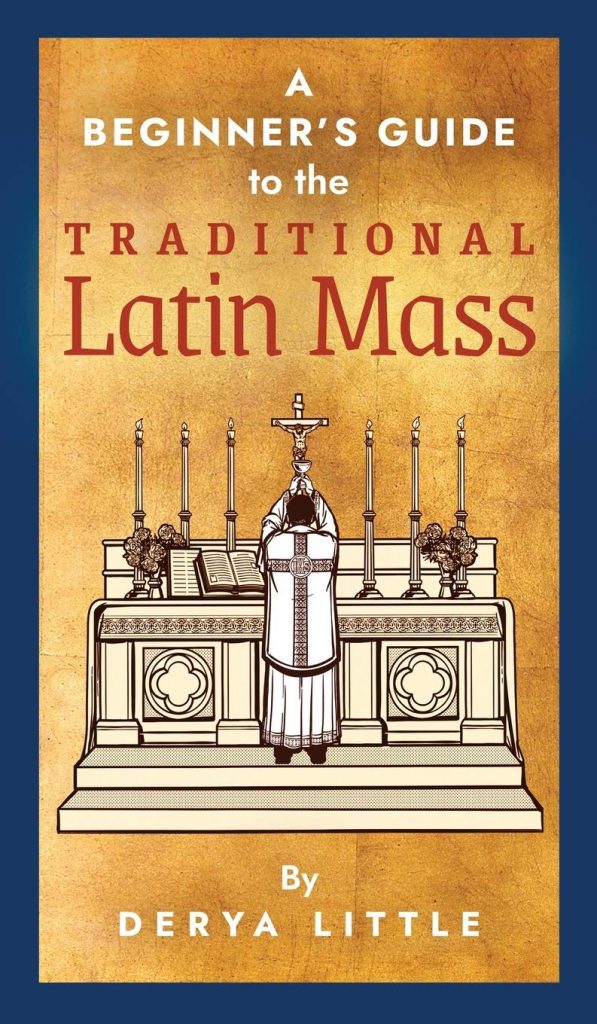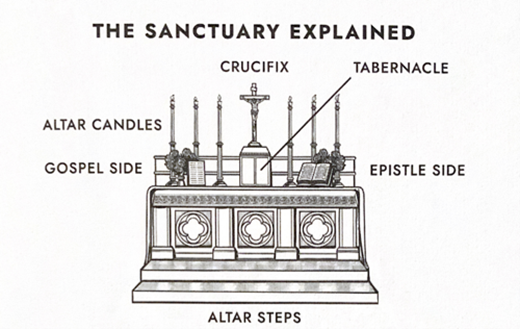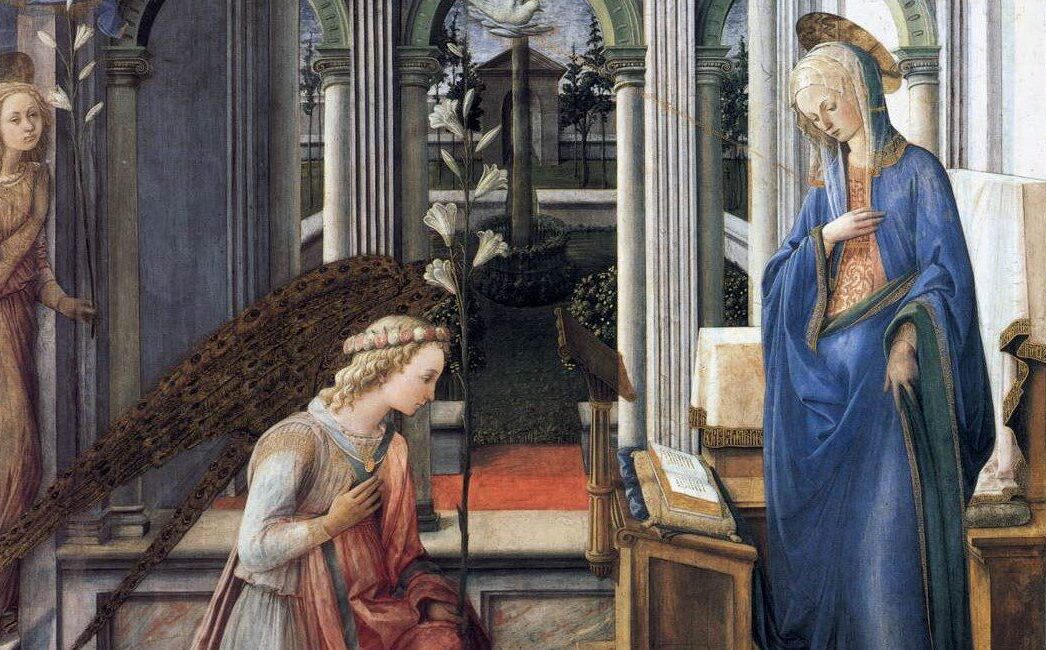As we pass the 13th anniversary of Pope Benedict XVI’s Motu Proprio, Summorum Pontificum, more priests and consequently a greater number of the faithful have begun participating in the Traditional Latin Mass or Extraordinary Form, and more resources have been produced to help provide a way in for those who feel daunted or intimidated and do not know where to start. One of the most recent and user-friendly offerings is A Beginner’s Guide to the Traditional Latin Mass, by Derya Little. This simple, slender volume is a true gift—and one that I wish I’d had when I was making my first forays into the Traditional Latin Mass. (I attend a parish that celebrates both forms of the rite and have seen the healthy, mutual influence between them that Pope Benedict desired.)

Little offers a genuinely friendly welcome to those coming to the Traditional Latin Mass for the first time. She writes advice that should be given by any parish that celebrates the Extraordinary Form: “First-timers, do not expect to follow along. Actually, it is better to put everything down and simply observe.” This mimics advice my pastor has given to those unsuspecting souls who have found themselves at the Extraordinary Form on those Feast Days where my parish’s principal Mass has been celebrated in that form: sit, revel in the silence, let the liturgy wash over you. Don’t get caught up in trying to follow word-by-word or action-by-action. Pray. Little also helpfully advises the first-timer to “sit behind people who know what they are doing.”
Key to the book are its original, crafted illustrations and charts. The book opens with a useful image of the sanctuary and an explanation of what signs to look for on the altar to determine whether one is attending a High or Sung Mass or a Low Mass. This Beginner’s Guide is wisely structured to escort the reader through the High Mass and Low Mass. With respect to the High Mass, “odd-numbered pages explain the flow of the Mass” with “People’s postures…marked in capital letters, while the priest’s movements and prayers are summarized in the right column.” The even pages offer short explanations of each part of the Mass. For example, in describing the Gradual, Little teaches that the “Missal is carried to the left side of the altar, signifying the bringing of the Gospel to the gentiles, and Our Lord’s being handed over from one judge to another.” The standing for the Gospel is explained as a demonstration of “respect” and of one’s “willingness to defend the teachings of Christ.” The immersion of a small piece of the Host in the Precious Blood is explained this way: “In order to eliminate any illusion that the Lord’s Body and Blood are separated, the priests drops a piece of the Host in the Precious Blood. Our Lord is fully present under both species.”

The book’s simple illustrations for both the High and Low Masses show the priest’s position relative to the altar and to the congregation and allow the reader easily to determine what part of the Mass is occurring at a given moment. This is an especially helpful aid for those who are experiencing the Traditional Latin Mass for the first time. Little also includes the prayers that St. Thomas Aquinas composed for reciting before and after Mass, Latin and English versions of basic prayers, and a concluding section discussing how one can “enter more deeply into the prayers of the traditional Latin Mass.” This is a good book for parishes that celebrate the Extraordinary Form to consider buying in bulk to offer to first-time visitors.
A Beginner’s Guide to the Traditional Latin Mass has surprisingly little of the Latin prayers from the Mass reprinted in it. That lack could undermine the ability of a first-timer to follow along. The book also emphasizes the practical nuts-and-bolts of the Mass. Without further study, a reader will not be able to situate the Extraordinary Form in the larger liturgical life and prayer of the Church. But, here, I may be criticizing the book for things it had to sacrifice in order to accomplish its goal of providing a user-friendly aid to the first-timer. And this it does exceedingly well.
A Beginner’s Guide to the Traditional Latin Mass is an eminently practical and helpful guide that will allow many to take their first plunge into the deep springs of the Church’s liturgical tradition. Its publication is a welcome addition to the growing number of books that help Catholics reclaim their liturgical patrimony. For those who take the plunge, A Beginner’s Guide could be combined fruitfully with Treasure and Tradition: The Ultimate Guide to the Latin Mass by Lisa Bregman, The Latin Mass Explained by George Moorman, and even the children’s book, Know Your Mass by Father Demetrius Manousos.
With Summorum Pontificum, Pope Benedict attempted to heal the deep liturgical breach that followed the Second Vatican Council. Now, certainly some of this breach was self-inflicted, as Yves Chiron, and others have described. But much of this breach was caused by what Pope Benedict XVI called the “hermeneutic of discontinuity and rupture,” which continues to be trotted out to pit the Ordinary Form of the Roman Rite against the Extraordinary Form. In Summorum Pontificum Pope Benedict XVI invited us all see that in “the history of the liturgy there is growth and progress, but no rupture. What earlier generations held as sacred, remains sacred and great for us too, and it cannot be all of a sudden entirely forbidden or even considered harmful.” This is an invitation to all of us to come to know and treasure the Church’s liturgical patrimony. Knowing the liturgy that our grandfathers’ grandfathers’ grandfathers’ grandfathers prayed will help us to more deeply encounter the one Lord in the Liturgy. As Pope Benedict wrote in 2007, “It behooves all of us to preserve the riches which have developed in the Church’s faith and prayer, and to give them their proper place.” With A Beginner’s Guide to the Traditional Latin Mass, Darya Little has taken up Pope Benedict’s invitation and given all of us an entry point by which we can come to know, love, and cherish those riches.


